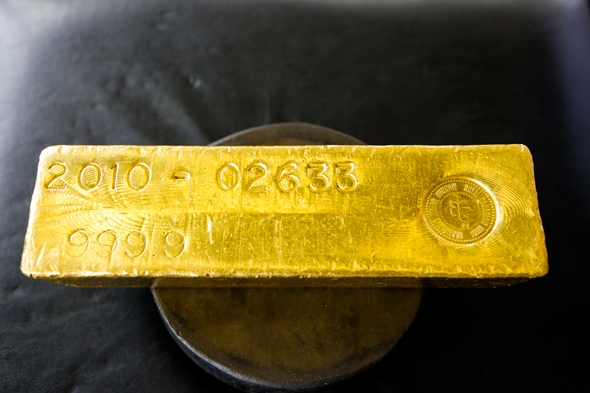
20 Jun Touring the Royal Canadian Mint in Winnipeg
For some reason, perhaps due to my curiosity, I love seeing how something is made. I always enjoy taking tours through factories and production facilities to get an inside look into how items we use come into existence. So, when I was researching Winnipeg, and I happened across the Royal Canadian Mint, I figured we just had to get a glimpse at how money is made.
The Royal Canadian Mint offers tours 7 days a week to give you a behind-the-scenes look into the production facility, and it’s a really interesting process! I even had the opportunity to become a penny myself…let me ask you: how can life get much better than that?
The Royal Canadian Mint produces around 20 million coins per day, and due to their specialized techniques (they are the only mint that has perfected the 2 tone coin), they produce coins for many other countries besides Canada. They are also the only mint that makes colored coins. In order for the color to stay, the coins have to be painted, then baked and varnished—we were able to get a peek at a few of the coins with color on them, and they were impressive to see.
Most of the tour is held on the second floor of the facility, and no pictures are allowed in this area because it has to stay secure. The tour starts out with a bit of history and facts; for example, there have not been any pennies in Canada since 2012. It costs 1.6 cents to produce a penny and Canada used to print around one billion pennies per year—it definitely makes sense why they would want to get rid of the penny! And, even though the 50 cent piece is no longer in circulation, it is still printed for collectors, and because it was the first coin ever printed at the Winnipeg Mint, it holds a special place in the mint’s heart. The 50 cent piece boasts a design that represents the 4 founding countries of Canada: England, France, Scotland and Ireland.
In Canada, the $1 coin is nicknamed the “Looney” because its design depicts a loon, but this was not the original design intended for the $1 coin. The original design consisted of two men on a boat, but when the coin mold was in the process of being sent to the mint, it was lost; this meant they had to scrap the idea for the first design and go with the second, the loon, to avoid the possibility of an amass of counterfeit coins. New coin designs are created by artists and sometimes even the general public though contests.
Regarding the coin production, coins are first made into blanks and once the blank is perfect, it is stamped with the coin’s design. Machines stamp the coins incredibly fast—they are stamped at a rate of 14 coins per second. The coins have to go through a quality check before they are packaged and shipped out. Tours lead you through a hallway where you can look down upon the production process as the various steps and procedures are explained. Brinks Security delivers the coins to where they need to go—the mint doesn’t want to attract attention by sending out one of their branded trucks! Damaged coins, either from the factory or from the public, are crushed by the mint and cannot be reused or remade into new coins.
Understandably, employees have to go through a rigorous security process every day when they arrive and when they leave. Their uniforms cannot have any metal on them—this spawned after a past employee managed to steal thousands of quarters in his “steel-toed” boots.
The entire tour lasts around 30-45 minutes and once the tour is over, you can head back downstairs for a look around the small museum type lobby. There are interactive displays showing what countries the Royal Canadian Mint produces money for, the weight of gold compared to other materials and more. The Royal Canadian Mint has also made medals for the Olympics, so they were on display in the lobby as well.
Also, if you are lucky, you will have the chance to hold a half million dollar gold bar. The gold bar weighs around 10 kilos, and it was definitely much heavier than I was expecting.
Even though it may not be the most exciting and adventurous activity around, touring the Canadian Mint definitely made for an interesting morning. I loved getting a peek behind-the-scenes into how money is made and we learned a gamut of out of the ordinary facts!
Have you ever been to a mint to see how money is produced?










